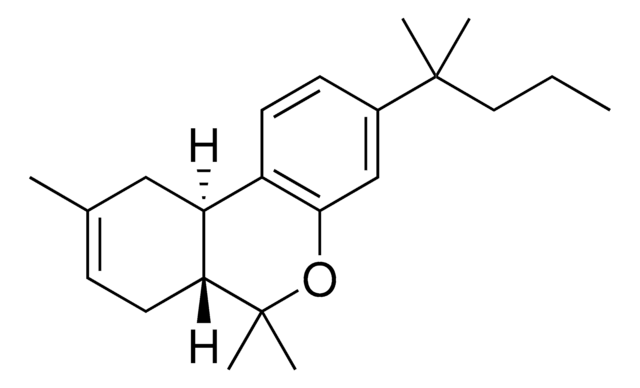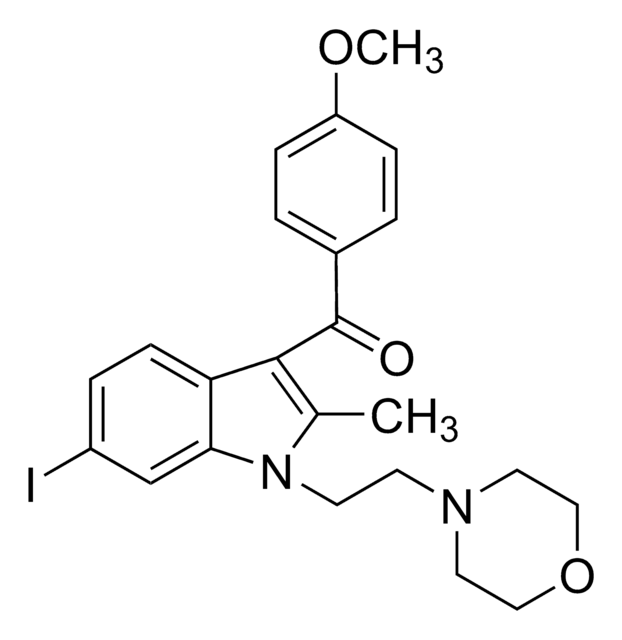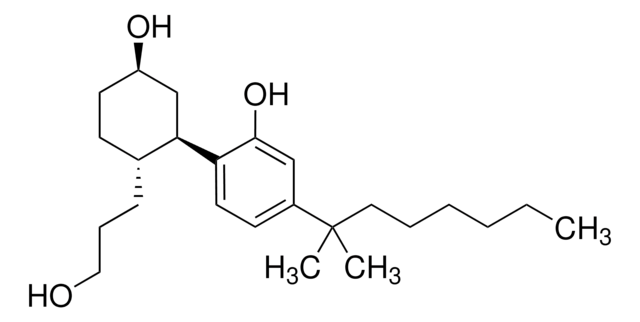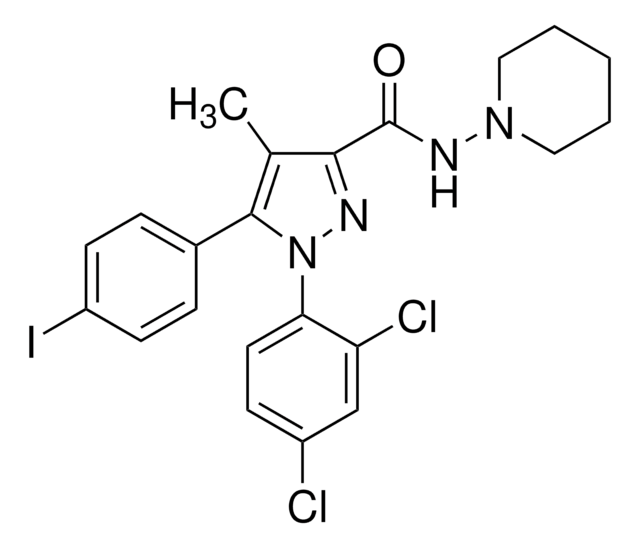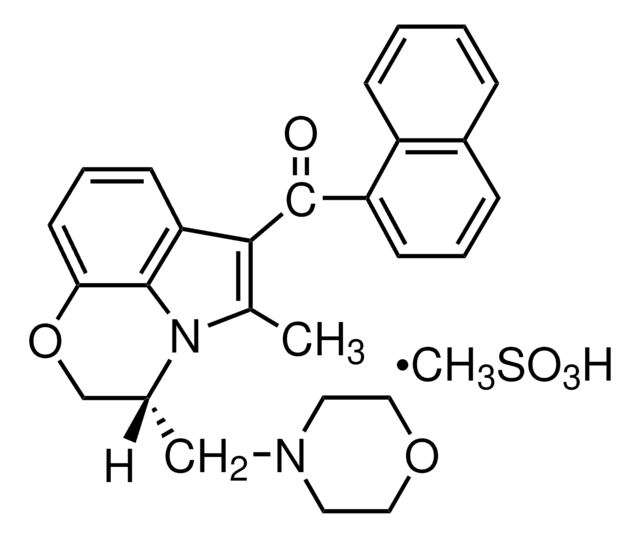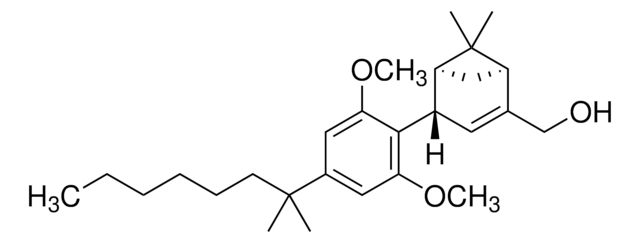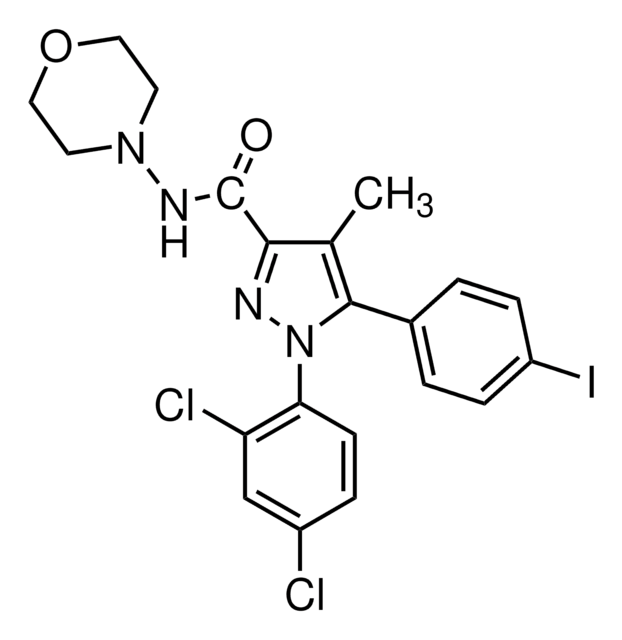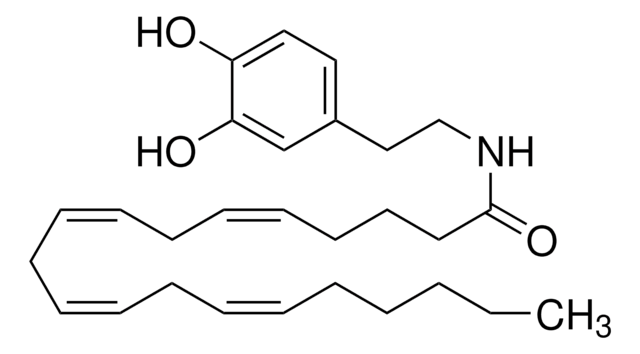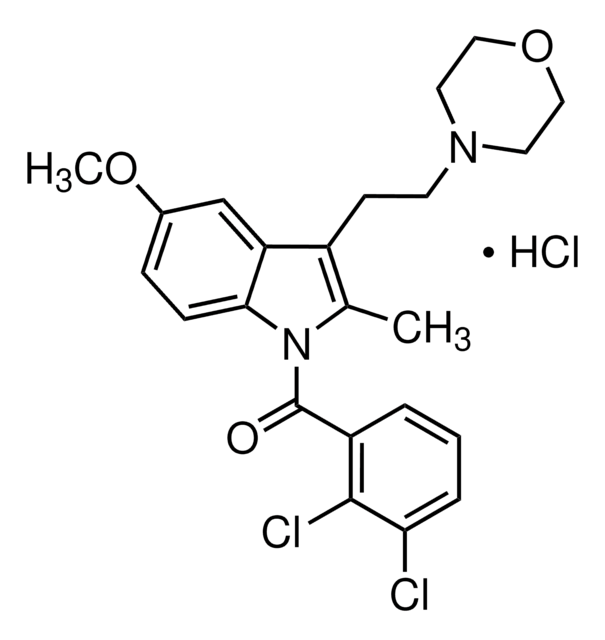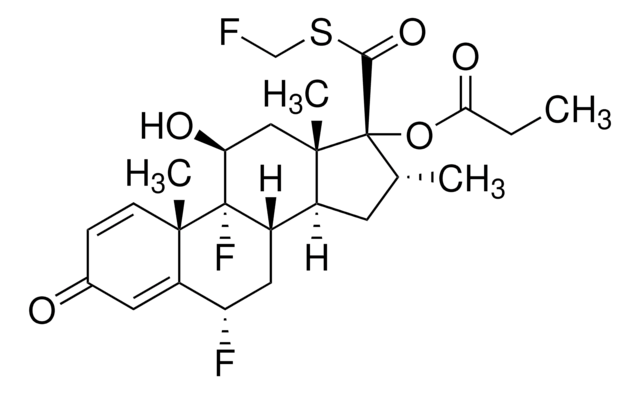A9719
Arachidonyl-2′-chloroethylamide hydrate
≥97% (HPLC), oil
Synonym(s):
ACEA
About This Item
Recommended Products
Quality Level
Assay
≥97% (HPLC)
form
oil
drug control
regulated under CDSA - not available from Sigma-Aldrich Canada
storage condition
desiccated
color
brown-red
solubility
DMSO: soluble
H2O: insoluble
storage temp.
−20°C
SMILES string
CCCCC\C=C/C\C=C/C\C=C/C\C=C/CCCC(=O)NCCCl
InChI
1S/C22H36ClNO/c1-2-3-4-5-6-7-8-9-10-11-12-13-14-15-16-17-18-19-22(25)24-21-20-23/h6-7,9-10,12-13,15-16H,2-5,8,11,14,17-21H2,1H3,(H,24,25)/b7-6-,10-9-,13-12-,16-15-
InChI key
SCJNCDSAIRBRIA-DOFZRALJSA-N
Gene Information
mouse ... Cnr1(12801) , Cnr2(12802)
rat ... Cnr1(25248)
Biochem/physiol Actions
Features and Benefits
Caution
Storage Class Code
10 - Combustible liquids
WGK
WGK 3
Flash Point(F)
Not applicable
Flash Point(C)
Not applicable
Personal Protective Equipment
Choose from one of the most recent versions:
Already Own This Product?
Find documentation for the products that you have recently purchased in the Document Library.
Customers Also Viewed
Our team of scientists has experience in all areas of research including Life Science, Material Science, Chemical Synthesis, Chromatography, Analytical and many others.
Contact Technical Service